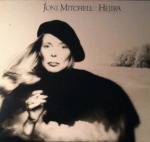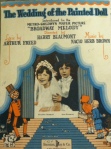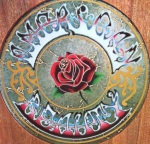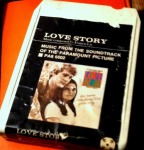
Women have inspired most of the popular songs we listen to. Many popular songs have female names in their titles. So many that I have chosen to go alphabetically.
Amelia My two favorite songs on Joni Mitchell’s Hejira album have women’s names in their titles. Both “Song for Sharon” and “Amelia” are long, mesmerizing songs. The hypnotic music groove supplied by Joni’s guitar provides the perfect bed for the provocative lyrics. (Joni Mitchell is not only one of the best lyricists, but is also among the best guitarists in pop-rock music history.)
“Amelia” is Amelia Earhart. Joni Mitchell has said that the song uses the aviator and her driven quest to represent her own overriding need to travel and perform music, to the disruption of family and relationships and a normal life. It’s a repetitive song that I never tire of. And we get to hear Ms. Mitchell’s Canadian r at the end of every verse as she sings “Amelia, it was just a false alarm.”
Bernadette The Four Tops had a string of powerful hits featuring lead vocalist Levi Stubbs. My favorites have always been their number ones, “Reach Out (I’ll Be There)” and “I Can’t Help Myself.” But just a notch below is their wonderful “Bernadette.” It’s a hard-driving number, like “Reach Out,” “Standing in the Shadows of Love,” and others that made these Motown stars second only to The Beach Boys as American hit-makers of the era.
I should also mention the Looking Glass hit “Brandy”—not because it’s a favorite, but because it’s the song my Sweetie asserts is her least favorite song of all time (with the exception of anything by Joni Mitchell, including “Amelia”). I had always loved imitating the lead vocal, with its quasi-lounge delivery, but especially liked doing so once I learned of my Sweetie’s annoyance by it. (Alas, I’m not able to do a convincing Join Mitchell impersonation.)
Carolina I recently made a discovery, upon listening again to the Romanian band Taraf de Haidouk’s 2001 album Band of Gypsies, that one song, “Carolina,” is a remake of a song from across the globe. The song is credited on the album to Gabi Voicila, but it’s actually a revved-up version of a song recorded in Jamaica in 1964 by The Folkes Brothers as “Oh Carolina,” one of the first ska/reggae songs. The original has a nice folky-Caribbean feel, which Shaggy, in 1993, turned into a delightful groove for his first hit. The woman is Caro-lie-na in the Jamaican versions, and Caro-lee-na in the Romanian, but it’s the same song.
Taraf de Haidouks are the quintessential “band of gypsies,” known for their frenetic, exultant workouts that feature violin, flute, impassioned vocals, and, underpinning it all (and occasionally taking a tasty ride) is the cimbalom, the happiest of musical instruments. It’s an Eastern European relative of the hammer dulcimer. It’s kind of like the back-end of an open grand piano, on which the cimbalom player strikes the strings with a mallet. The result is spidery and shimmery and enchanting. With a cimbalom aboard, a song’s lyrics may be sung in a language I don’t understand, and may be about failed crops or the death of a loved one, but the music sounds gleeful, and makes me want to tap, clap, and dance.
At any rate, I love Shaggy’s “Oh Carolina.” When subjected to Shaggy’s hits from the early ‘00s (while driving my daughter to school), I’d thought of him as a boring rapper whose verses worsened those mediocre songs that his guest artists sang. But Shaggy’s in control on “Oh Carolina.” I’ve reassessed Shaggy, due to that one song, which tops my running playlist. Groovy!
Dinah The great composer, pianist, singer, and raconteur Thomas “Fats” Waller did my favorite version of the 1925 song “Dinah.” It was written by Sam Lewis, Joe Young, and Harry Akst for Ethel Waters to sing in Plantation Revue. Many of my favorite singers recorded it, including The Boswell Sisters, The Mills Brothers, and Cliff Edwards. But Fats is the one I always hear. It’s got the sprightliness that he put across so well, and it seems timeless to me (although you’d be unlikely to hear anyone singing like that now—or singing that song any old way, for that matter).
Emily One of Syd Barrett’s psychedelic-pop contributions to Pink Floyd’s repertoire was the loopy and beaty “See Emily Play.” It’s my favorite Pink Floyd song, which may mean I’m not a true Pink Floyd fan.
Honorable Mentions: Amity Great name. “Amity” is probably my favorite Elliott Smith song, though it isn’t really characteristic of his music.
Belle The great Al Green recorded one of his best albums a few years after his incredible string of hits. Belle featured a nice, acoustic guitar-driven title song, a laid-back but still vocally inventive Al entertains.
Caroline “Caroline, No” is the haunting closer of The Beach Boys’ much-praised Pet Sounds album. The album was mostly Brian and his toys, the session musicians he used to get all of those interesting colorations in the songs. The Boys were almost an afterthought. “Caroline, No” is all Brian, and was issued as a Brian Wilson single. The lyrics were by Tony Asher, but it comes from Brian’s heart and soul.
Delia Georgia bluesman Blind Wille McTell sings the sad story of “Little Delia,” accompanied by his twelve-string guitar. Delia gets herself mixed up with some bad “rounders,” especially one Kenny, who shoots her dead and winds up in jail. Sordid stuff, but a nice, bright tune!
Eleanor/ Elenore I must mention Paul McCartney’s “Eleanor Rigby,” which blew me away when I first heard it. And then there’s The Turtles’ “Elenore,” with its groovily square lyrics: “Elenore, gee, I think you’re swell.” “You’re my pride and joy, et cetera.” Wonderfully nerdy stuff from the Fluorescent Leech and Eddie.
Dream Jukebox: Shaggy’s “Oh Carolina” is frequently on my iPod playlists of music to run to. When I get my Dream Jukebox, I’ll find the record.























